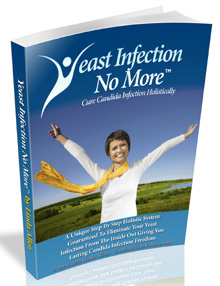Yeast Infection Symptoms You Need to Look Out for
Free Video Reveals 1 Weird Tip To Quickly Cure Your Candida Overgrowth & Enjoy Permanent Freedom From Yeast Infections In As Little As 12 Hours - Guaranteed!
>> Yeast Infection Guaranteed Treatment Click Here <<
Around 80% of women will be afflicted by a vaginal yeast infection at least once during their lives, according to the Center for Disease Control and Prevention. The type of yeast generally responsible for the infection is called Candida albicans, and in normal conditions it exists naturally and harmlessly in women?s bodies. But hormonal changes can spark the overgrowth of Candida yeast organisms, bringing about Candidiasis or yeast infection.
The symptoms of a vaginal yeast infection can include vaginal itching and burning, irritation or redness of the vulva, a burning sensation during urination, pain during vaginal intercourse, and the production of a thick white vaginal discharge that is often described as resembling cottage cheese.
In most of the cases of vaginal yeast infection, it is caused by the species of fungus named Candida albicans. However, yeast infections can also be caused by other species of Candida, and in such cases more specialized treatment may be required.
Vaginal irritation alone may not necessarily be indicative of a yeast infection. Vaginal irritation is also caused by the use of products such as perfumed soaps, bubble baths, douches, feminine hygiene sprays, spermicides, and vaginal deodorants. A vaginal discharge can sometimes occur in between a woman's menstruation periods, but if the discharge is not accompanied by itchiness, then it is unlikely to indicate a case of Candidiasis.
Bodily changes may cause a woman to experience a hormonal imbalance that can create an environment conducive to a vaginal yeast infection. Among the types of bodily changes that can cause such an imbalance are: menstruation, pregnancy, diabetes, stress, fatigue, and the effects of taking birth control pills, antibiotics, or steroids.
Should you experience any of the possible symptoms of a vaginal yeast infection, you will need to get an immediate medical checkup. There are several over-the-counter medications you can get without a prescription for treating a vaginal yeast infection. However, make sure you actually do have a yeast infection before you make use of these types of medications.
It is possible, although uncommon, for a woman to infect her male sexual partner with a yeast infection by means of vaginal intercourse. A woman with a yeast infection must vaginal intercourse until after she receives treatment and gets the yeast infection cured.
Worried about whether you or your partner is showing signs of a yeast infection? You can find helpful information about its causes and remedies at http://womens-health.i-know.info
Labels: antibiotic_and_yeast_infection, home_treatment_for_yeast_infection, natural_remedy_for_yeast_infection, sign_and_symptom_of_a_yeast_infection, yeast_infection_photo, yeast_infection_treatment

